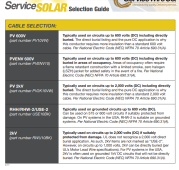In the US we consider HV max PV input to be 450V-500V Voc, with a couple of very rare exceptions coming in at 600V Voc max. Overseas, I am to understand there are inverters that handle 900V, possibly even higher, and it's not totally uncommon to see these significantly higher voltages. Obviously this would offer some significant advantages, so why don't we see >600V in the US?
I understand HV represents some potential safety concerns, so maybe that's the sole reason we don't see >600V inverters here? Although, 450V-600V with a little current is already high enough to be a safety threat for someone stupid enough to lick the exposed wires, so what's the concern with going up to say 900V? Especially if it's already being done elsewhere without issue? Is there a technical reason I'm missing that has to do with implementing it with split-phase? Is it lack of demand from NA installers who have traditionally worked with LV and are just slow to move to the potential benefits of even higher voltages?
I understand HV represents some potential safety concerns, so maybe that's the sole reason we don't see >600V inverters here? Although, 450V-600V with a little current is already high enough to be a safety threat for someone stupid enough to lick the exposed wires, so what's the concern with going up to say 900V? Especially if it's already being done elsewhere without issue? Is there a technical reason I'm missing that has to do with implementing it with split-phase? Is it lack of demand from NA installers who have traditionally worked with LV and are just slow to move to the potential benefits of even higher voltages?



